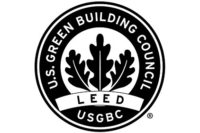An interesting anti-LEED movement seems to be gaining momentum among states that are opposed to the USGBC LEED rating system and its discriminatory, monopolistic requirements for wood and other building materials. Along with Georgia, Alabama and Maine, the states of North Carolina, Florida and Ohio have recently introduced legislation that would effectively prohibit state-funded buildings from pursuing LEED certification. The Ohio legislature has taken the battle to ban LEED to another level by expressly prohibiting its use by Ohio’s state agencies and government entities. The resolution states:
The U.S. Green Building Council’s LEED v4 green building system fails to conform to recognized voluntary standard development procedures, including but not limited to American National Standards Institute procedures, and fails to base environmental and health criteria on risk assessment methodology; now therefore be it.
The Ohio Resolution
The Ohio resolution has everything to do with LEED v4 Materials and Resources credits that attempt to label certain building materials “toxic” using a poorly written, unrecognized, unscientific “standard” that defines what materials are “toxic.” The language in the resolution emphasizes that LEED is a privately developed rating system that is not developed under a recognized, consensus-based process, such as ANSI, and as such, the requirements in the rating system are unbalanced and unscientific.
Ohio LEEDites counter that banning LEED from use will jeopardize “the progress Ohio has made to ensure our students and teachers have the healthiest, most energy efficient schools” and that the resolution “is a misinformed chemical lobby-backed attempt to reverse the progress that has been made to provide our children with healthy, safe places to learn.” I guess these LEEDites are banking on the fact that some people will believe anything.
First off, the resolution actually promotes the use of green building standards that “have been developed pursuant to ANSI procedures be presumptively deemed to be open, transparent and voluntary consensus standards suitable for Ohio government use.” Reading between the lines, this is a tip to the Green Building Initiative’s Green Globes ANSI Standard, recently ranked by the U.S. government’s General Services Administration as better than LEED.
Secondly, there is scant evidence that any LEED certified building, schools included, have proven to be consistently better performing or healthier to occupants. In a USA Todayarticle “Green Schools: Long On Promise, Short On Delivery,” the author found little to link LEED certification for schools to energy efficiency, better health or learning.
The article quotes Houston school district’s Energy Manager Gavin Dillingham as saying, “People have the mistaken impression that once buildings are LEED-certified, they’re always going to run energy-efficiently. They don’t.”
It also quotes Tom Loveless, an expert on student achievement at the Brookings Institution in Washington, D.C., as saying, “I haven’t seen any research indicating that whether a school is green or not makes any difference.”
And finally, Rick Savors, a spokesman for the Ohio School Facilities Commission states that, “The state school-design manual requires so many ‘green’ features that a new school could nearly get LEED certification simply by following the manual.”
USGBC’S Policy Brief
None of these facts stopped the USGBC from issuing a Policy Brief titled “STOP THE CHEMICAL LOBBY’S ATTACK ON GREEN SCHOOLS!” Some of the more outrageous claims in the brief include:
“THE CHEMICAL LOBBY WANTS TO KEEP CHEMICALS IN OUR SCHOOLS.”
Resolution 25 is a chemical lobby-backed attempt to end all healthy, efficient public buildings in the state.
Resolution 25 threatens the health and well-being of Ohio’s 1.84 million public school students.
So, what would compel people to make such outlandish statements? Money. USA Todayreported that, “In Ohio, the state is cutting $1.8 billion in aid to schools in 2012 and 2013 while agreeing to pay builders and designers an extra $160 million from a tobacco settlement fund so that 300 new schools can get certified under LEED.” That’s a lot of cheddar. Additionally, the USGBC’s Policy Brief reports that Ohio has more than 500 LEED certified buildings, 374 member organizations and almost 5,000 LEED accredited professionals. Each of these represents a significant revenue stream for the USGBC. The USGBC is making the most incredible and misleading statements about the proposed resolution out of sheer panic—removing the requirement to use LEED means lost revenue.
Conclusion
Don’t believe the hype what the USGBC is attempting to cram down everyone’s throats. Banning LEED for use on state funded buildings will not result in energy hog buildings, and will not make our school children sick. In fact, there is an emerging body of evidence indicating that LEED certified buildings often use more energy than predicted and can be unhealthy to occupants.
In a post-occupancy study done for LEED-certified Washington Middle School in Olympia, Wash., the authors found that the recycled content rubber flooring used in the weight room off-gassed unhealthy carbon disulfide and toluene and recommended that it be removed. The report gave the school a below-average grade D for acoustics and a C for thermal comfort even though the USGBC awarded the building the maximum number of available points for the Acoustics and Thermal Comfort credits. In its first two years of operation, the school consumed 19 percent more energy than a conventional school and 65 percent more than planned.
It should not come as any surprise to the USGBC that anti-LEED sentiment is finding its way into legislation. Industry has been trying since the inception of LEED to engage with the USGBC in an effort to make the system better, more balanced, more science-based and more transparent. Many in the industry have been thwarted by the USGBC at every turn, their numerous entreaties ignored. Asked why the USGBC has treated industry so poorly, Nadine Block, vice president for government affairs at SFI, responds, “We’ve been asking that same question of the USGBC ourselves and have not to date gotten a satisfactory answer on that. We have encouraged them to be more transparent on what it would take for the SFI standard to be recognized, what they are not seeing in the SFI standard that they would need to see in order for us to be recognized, and we haven’t gotten that answer.”
Will the USGBC’s policy of exclusivity and its stubborn adherence to indefensible ideals be its undoing? Will anti-LEED legislation be successful at steering states away from LEED toward an ANSI based green building rating system such as Green Globes? One can always hope.






